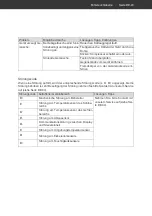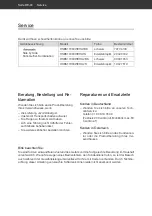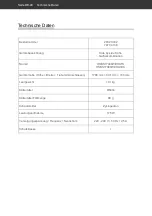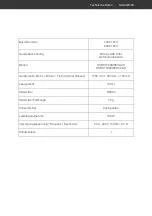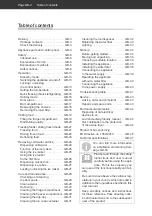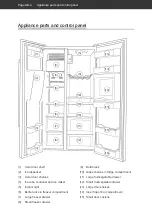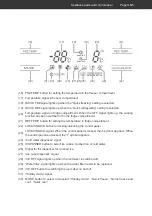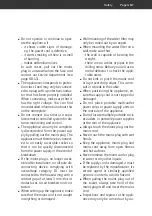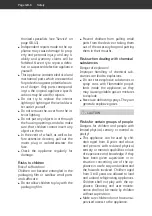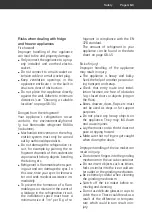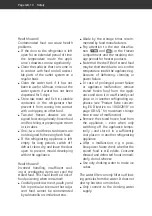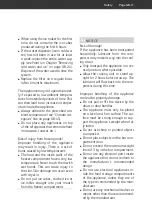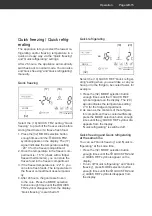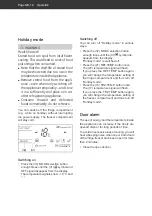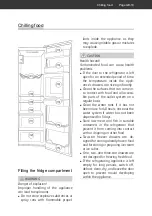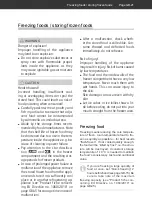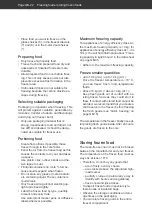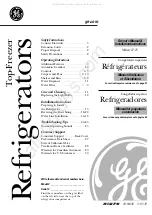
Safety
Page GB-7
■
Do not operate or continue to oper-
ate the appliance, if
–
it shows visible signs of damage,
e.g. the power cord is defective,
–
it starts smoking or there is a smell
of burning,
–
makes unfamiliar noises.
In such cases, pull out the mains
plug or unscrew/isolate the fuse and
contact our service department (see
page GB-43).
■
The appliance corresponds to protec-
tion class I and may only be connect-
ed to a plug with a protective conduc-
tor that has been properly installed.
When connecting, make sure that it
has the right voltage. You can find
more detailed information about this
on the nameplate.
■
Do not connect to a timer or a sepa-
rate remote-controlled system for dis-
tance monitoring and control.
■
The appliance can only be complete-
ly disconnected from the power sup-
ply by pulling out the mains plug. The
appliance must therefore be connect-
ed to an easily accessible socket so
that it can be quickly disconnected
from the power supply in the event of
breakdown.
■
If the mains plug is no longer acces-
sible after installation, an all-pole dis-
connecting device complying with
overvoltage category III must be
connected to the house wiring with a
contact gap of at least 3 mm; this in-
cludes fuses, circuit breakers and con-
tactors.
■
When setting up the appliance, make
sure that the mains cord is not caught
in anything or damaged.
■
Wall mounting of the water filter may
only be carried out by an expert.
■
When mounting the water filter on a
wall, make sure that
–
the wall is capable of bearing the
weight,
–
there are no cables or pipes in the
drilling areas. Before you drill, use a
metal detector to check the appli-
cable areas.
■
Do not kink or pinch the mains cord
or lay it over sharp edges. This can re-
sult in a break in the cable.
■
When positioning the appliance, en-
sure the supply cord is not trapped or
damaged.
■
Do not place portable multi-outlet
power strips or power supply units on
the rear side of the appliance.
■
Do not locate multiple portable sock-
et-outlets or portable power supplies
at the rear of the appliance.
■
Always touch the mains plug, not the
mains cord.
■
Never touch the mains plug with wet
hands.
■
Keep the appliance, mains plug and
mains cord away from open flames
and hot surfaces.
■
Never immerse the mains cord or plug
in water or any other liquids.
■
If the supply cord is damaged, it must
be replaced by the manufacturer, its
service agent or similarly qualified
persons in order to avoid a hazard.
■
When pulling the mains plug out of
the socket, always take hold of the
mains plug itself and never the mains
cord.
■
Inspections and repairs to the appli-
ance may only be carried out by au-

